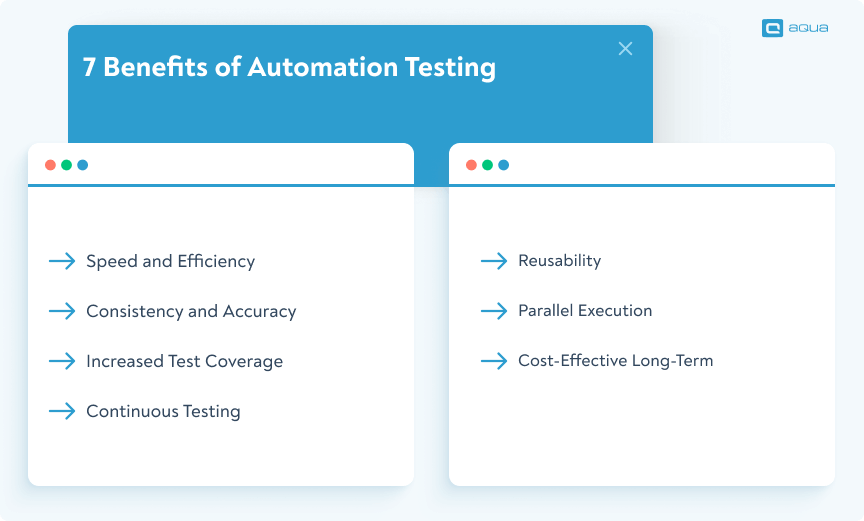In this guide, we’ll break down the key differences between these two testing approaches without the fluff. You’ll get practical insights into when each shines, where they fall short, and how to strike the right balance for your specific testing needs. No buzzwords, no corporate speak – just straight talk about testing approaches that actually work.
What is Manual Testing?
Manual testing is exactly what it sounds like – a human tester working through test cases by hand. The tester clicks buttons, enters data, and checks results against expected outcomes. It’s the original testing method that’s been around since software testing became a thing.
In manual testing, QA professionals:
- Execute test cases step-by-step without automation tools
- Verify results by visually comparing actual vs. expected outcomes
- Document bugs and issues as they encounter them
- Rely on their experience and intuition to spot potential problems
- Make judgment calls on subjective aspects like user experience
Manual testing creates a direct connection between the tester and the application. The tester becomes the end user, experiencing the software just as a real user would, with all the unpredictability and varied behaviors that humans bring to the table.
Benefits of Manual Testing
Manual testing brings several advantages that automation simply can’t match. Here’s why it remains essential even as automation grows more sophisticated:
- Human Intuition: Manual testers can spot weird issues that automated scripts would miss. Your instinct might catch that something “feels off” even when it technically works – like a button that’s technically clickable but awkwardly positioned.
- Flexibility: Need to switch testing angles mid-test? No problem. Manual testing lets you pivot instantly when you spot something interesting. You can investigate strange behavior on the fly without rewriting test scripts.
- Low Setup Costs: There’s minimal upfront investment – just a tester with a browser and some documentation. No automation frameworks to set up or maintain.
- User Experience Testing: Manual testing excels at subjective assessments. Is the app intuitive? Does the workflow make sense? Is that error message helpful? These questions need human judgment.
- Ad-hoc Testing: Some scenarios can’t be scripted in advance. Manual testing lets you explore application behavior based on discoveries you make during testing.
Visual Verification: Humans excel at spotting visual bugs, alignment issues, and UI inconsistencies that automation tools often miss.
"You can’t automate everything. That’s why some companies still prefer manual testers."
Limitations of Manual Testing
While manual testing has its place, it comes with significant drawbacks that can impact your testing efficiency:
- Time-Consuming: Running the same test cases repeatedly takes considerable time. Imagine manually checking every form field validation across multiple browsers for every release – that’s hours of repetitive work.
- Human Error: Even the best testers get tired and make mistakes. After the 50th test case, concentration levels drop and errors creep in – missed steps, incorrect data entry, or overlooking subtle bugs.
- Scaling Challenges: As your application grows, the number of test cases multiplies. Manual testing simply can’t keep up with large apps that need thorough regression testing on tight schedules.
- Inconsistent Results: Different testers might execute the same test case differently or interpret results based on their own experience, leading to inconsistency.
- Resource Intensive: For comprehensive coverage, you need multiple testers working continuously – a significant personnel commitment.
- Limited Test Coverage: There’s only so much a human tester can verify in a given timeframe, which might mean cutting corners when deadlines loom.
These limitations become particularly painful in fast-moving development environments where quick feedback is crucial. Want to minimise the limitations of manual testing and test management?
Then we have good news for you – aqua cloud, an AI-powered test management system, is designed just for this reason – making testing faster, more effective, and less painful for you.
Aqua’s AI copilot helps you generate test cases in seconds from requirements, which would take minutes, sometimes close to half an hour. This means 98% efficiency. Same goes for requirements and test data creation too. Apart from that, you have 100% traceability, test coverage and visibility over your testing efforts, nothing gets missed. If you want to supercharge your testing efforts with automation integrations, aqua delivers it through either Selenium, Jenkins, Ranorex, or any other framework through rest API. A centralised repository helps you combine both your manual and automated tests together, and manage them seamlessly from one platform. One-click bug-tracking tool Capture turns your bug reporting efforts into a breeze. So why are you still relying on only manual efforts?
Supercharge your manual test creation efforts by 98% with AI
What is Automated Testing?
Automated testing uses specialised tools and scripts to run predefined test cases automatically without human intervention. Instead of a person clicking through an application, automation scripts handle the interactions and verify the results.
At its core, automation testing involves:
- Writing code that simulates user actions (clicks, form submissions, etc.)
- Creating assertions that verify expected outcomes
- Running tests automatically according to triggers (like code commits or scheduled runs)
- Generating reports that highlight successes and failures
Automation testing transforms testing from a manual process to a programmatic one. It’s like having a tireless QA tester who can run the same tests consistently, day and night, without getting bored or making careless mistakes.
Popular automation tools include Selenium, Cypress, and Playwright, each with its own strengths and learning curves. These tools have dramatically changed how QA teams approach testing, especially for web applications.
Benefits of Automation Testing
Automation testing offers game-changing advantages that have made it increasingly popular in modern development environments:
- Speed and Efficiency: What takes hours manually can be done in minutes with automation. One client ran 500+ regression tests overnight that would have taken their team a full week to execute manually.
- Consistency and Accuracy: Automated tests perform the exact same steps in the exact same way every time. No more “it worked when I tested it” situations – automation eliminates human variability.
- Increased Test Coverage: With automation, you can run thousands of test cases across different configurations, browsers, and devices – coverage that would be impractical manually.
- Continuous Testing: Automation integrates seamlessly with CI/CD pipelines, allowing tests to run automatically with every code change, providing immediate feedback to developers.
- Reusability: Once created, automated tests can be reused indefinitely, providing ongoing value with minimal maintenance (assuming stable application features).
- Parallel Execution: Automated tests can run simultaneously across multiple environments, dramatically reducing total test time.
- Cost-Effective Long-Term: Though upfront costs are higher, automation delivers significant ROI over time. One company saved over $1 million in QA costs through strategic automation.

Your tests should be parallel friendly, otherwise you're gonna have a bad time scaling
Don't use sleeps
Have test metrics for your test-suite
Prevent flaky tests by stress testing any newly created test
Tackle flaky tests as soon as they come up, can't tell you how many flaky tests ended up being edge cases and rare/real bugs
Don't be afraid to add data attributes to the codebase to make tests more robust
Everybody on your team should know how to write an E2E test
Automation should be part of dev culture
Limitations of Automation Testing
Despite its advantages, automated testing isn’t a silver bullet. It comes with several limitations and challenges:
- High Initial Investment: Setting up automation requires significant upfront costs – both in terms of tools and skilled personnel. A solid automation framework takes time and expertise to build properly.
- Maintenance Burden: Test scripts break when the application changes. In rapidly evolving applications, maintaining automation can become a job in itself.
- Limited Exploratory Capabilities: Automated tests only check what they’re programmed to check. They’ll never notice that clicking a button feels laggy or that an error message is confusing.
- Technical Debt: Poorly written test automation quickly becomes a liability. Without good practices, you’ll end up with flaky, unreliable tests that create false alarms.
- Not Suitable for Everything: Some testing scenarios simply don’t make sense to automate – one-time tests, highly visual evaluations, or constantly changing features.
- Learning Curve: Creating effective automation requires programming skills that many manual testers don’t initially possess.
- Tool-Specific Limitations: Every automation tool has constraints. Cypress tests, for example, run best in Chrome-family browsers, potentially missing issues in other environments.
Reading about testing strategies is one thing, while experiencing the real-world consequences of your decisions is another. Ever wondered what happens when you invest too early in automation, or when you cut corners on test coverage to meet a deadline? Below, you can step into the shoes of a QA Lead for 6 months and see firsthand how your testing decisions impact budget, team morale, and product quality. Make your choices and discover whether you can find the right balance between manual and automated testing.
🎯 The Test Maintenance Nightmare (Click to open)
▼Experience the real consequences of testing strategy decisions! You're the QA Lead managing a testing team over 6 months. Every decision affects your budget, coverage, team morale, and bug escape rate. Can you find the right balance between manual and automated testing?
Key Differences Between Manual and Automated Testing
Understanding the fundamental differences between manual and automation testing helps you make smart decisions about where to invest your testing resources.
| Aspect | Manual Testing | Automation Testing |
|---|---|---|
| Execution Method | Human testers perform actions and verify results | Scripts execute predefined test steps and assertions |
| Speed | Slower, limited by human capabilities | Much faster, especially for repetitive tests |
| Initial Cost | Low startup costs, higher ongoing costs | Higher initial investment, lower long-term costs |
| Reliability | Subject to human error and fatigue | Consistent results but limited to programmed checks |
| Flexibility | Highly adaptable, can explore unexpected behaviors | Limited to predefined scenarios |
| Coverage | Limited by time constraints | Can achieve extensive coverage through parallel execution |
| Technical Skills | Minimal technical requirements to start | Requires programming knowledge and tool expertise |
| Best For | New features, exploratory testing, UX evaluation | Regression testing, repetitive tasks, performance testing |
| Feedback Speed | Slower feedback cycle | Immediate results when integrated with CI/CD |
| Maintenance | Test cases need simple updates | Scripts require technical maintenance when app changes |
The difference between manual testing and automation testing isn’t about which is better overall – it’s about using each approach where it makes the most sense. Smart QA teams leverage both testing methods based on the specific testing needs and project constraints.
When to Use Manual Testing vs. Automated Testing
Choosing between manual and automated testing shouldn’t be an either/or decision. Each approach has its sweet spot. Here’s how to make the right call:
When Manual Testing Makes More Sense:
- Exploratory Testing: When you need to discover issues without predefined test cases. Manual testing shines when you’re exploring a new feature and need to follow your intuition about potential problems.
- Usability Testing: Evaluating whether something is user-friendly requires human judgment. Does the interface make sense? Is the workflow intuitive? These questions need human assessment.
- Visual Validation: For checking design elements, layout issues, or anything where visual appearance matters. A human can instantly spot that a button is the wrong color or that text is getting cut off.
- One-Time Testing: For features that will only be tested once or rarely, the investment in automation often doesn’t make sense.
- Early Development Phases: When features are rapidly changing, maintaining automation scripts becomes inefficient.
- Ad-hoc Testing: For scenarios that can’t be predicted or scripted in advance.
When Automation Testing Makes More Sense:
- Regression Testing: For ensuring that new code doesn’t break existing functionality. One company reduced their
regression testing cycle from weeks to hours through strategic automation.
- Repetitive Tasks: Tests that need to be executed frequently with the same steps. Cross-browser testing is a perfect example – checking the same functionality across Chrome, Firefox, Safari, and Edge.
- Performance and Load Testing: When you need to simulate hundreds or thousands of users, automation is the only practical approach. Tools like JMeter or Gatling can stress-test your application at scale.
- Data-Driven Testing: When the same workflow needs testing with multiple data sets. Automation can easily run the same test with different input values.
- Integration with CI/CD: For tests that need to run automatically whenever code changes, providing immediate feedback to developers before issues reach production.
- High-Risk, Critical Paths: For business-critical workflows that absolutely must work correctly, automation provides consistent verification.
A balanced approach often yields the best results – using automation for stable, repetitive tests while keeping manual testing for areas where human judgment adds the most value
Conclusion
The difference between automation and manual testing isn’t about which is superior – it’s about knowing when to use each approach to maximise your testing effectiveness. Like a carpenter choosing between power tools and hand tools, the smart QA professional selects the right testing method for each specific job.
Where does your testing strategy fall on the manual vs. automation spectrum? Are you getting the benefits of both approaches or leaning too heavily toward one side? The answer will depend on your specific project needs, team capabilities, and business goals – but understanding the fundamental differences is the first step toward striking the right balance.
To keep this balance, you need a centralised platform that combines them both – a platform that will take the pain of testing from you. With aqua cloud’s AI-powered generative features, you’ll save 42% in time and resources. Automation integrations like Selenium, Cypress, and Ranorex will cut down repetitive work, while Azure DevOps and Jira integrations will supercharge your DevOps and bug tracking efforts. Alongside 100% test coverage and visibility with aqua cloud, AI Copilot guides you towards greatness – helping you combine human intuition with the power of machines.
Supercharge both your manual and automated tests with 100% AI-powered TMS


















